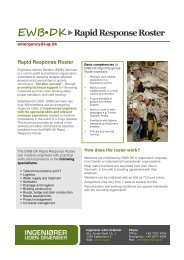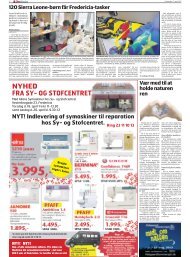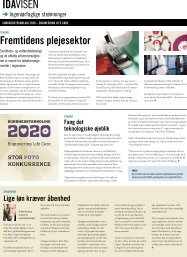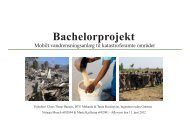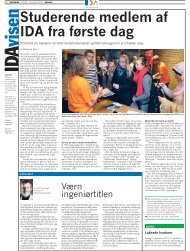Create successful ePaper yourself
Turn your PDF publications into a flip-book with our unique Google optimized e-Paper software.
GENERATOR AND ELECTRICAL SYSTEM<br />
be connected to. The result of the rectification is denoted ripple current and shown on<br />
figure 7.5.<br />
Figure 7.5: The result of 3-phased AC converted into DC ripple current [34]<br />
As stated in the requirement list, ID 2, the system voltage must be 48 V DC. This means that<br />
the rippled output voltage from the rectifier must be at least 48 V before any voltage is<br />
transmitted to the batteries. The angular velocity of the generator, at which the voltage of<br />
48 V is reached, is the cut-in speed, i.e. 250 rpm as described in section 7.1.<br />
Input breaker<br />
An input breaker, or circuit breaker, is an automatic switch, which protects the system<br />
from damage caused by overload. If a fault condition is detected the input breaker imme-<br />
diately discontinues the electric flow. When the breaker is activated the wind turbine is be<br />
free spinning, as there is no resistance from the generator. The previously described shut-<br />
down switch should therefore be activated once the input breaker is activated in order to<br />
brake the wind turbine.<br />
Battery Bank<br />
It is recommended to use deep-cycle lead-acid batteries, which, contrary to normal lead-<br />
acid automotive batteries, may be fully discharged without damage. The size of the battery<br />
bank and the manner in which the individual batteries are connected depends on the spe-<br />
cific needs and will therefore vary from site to site.<br />
Earthing system<br />
IEC 61400-2 requires that the wind turbine design includes a local earthing system,<br />
which ensures that tower (including guy wires) are appropriately earthed to reduce<br />
damage from lightning [5, p. 111].<br />
73



